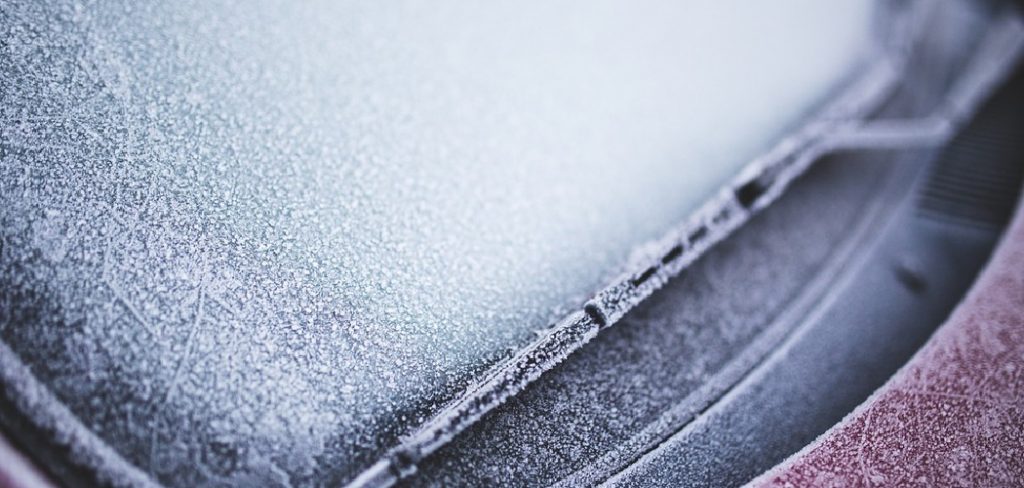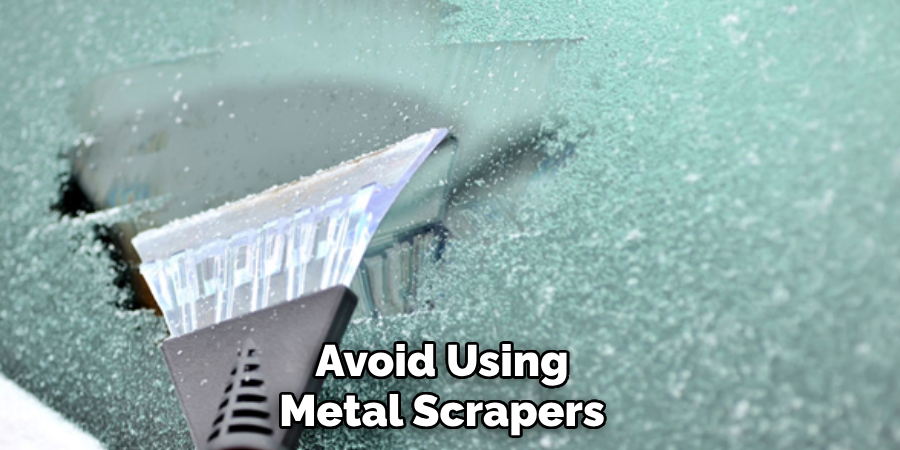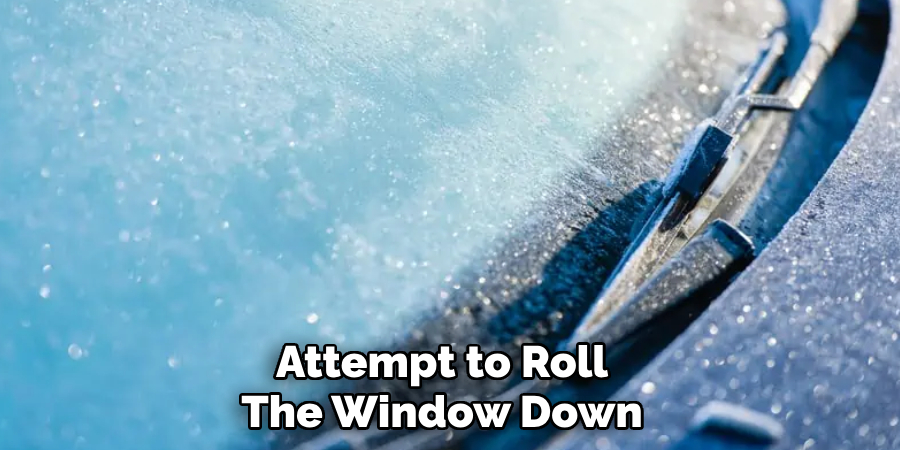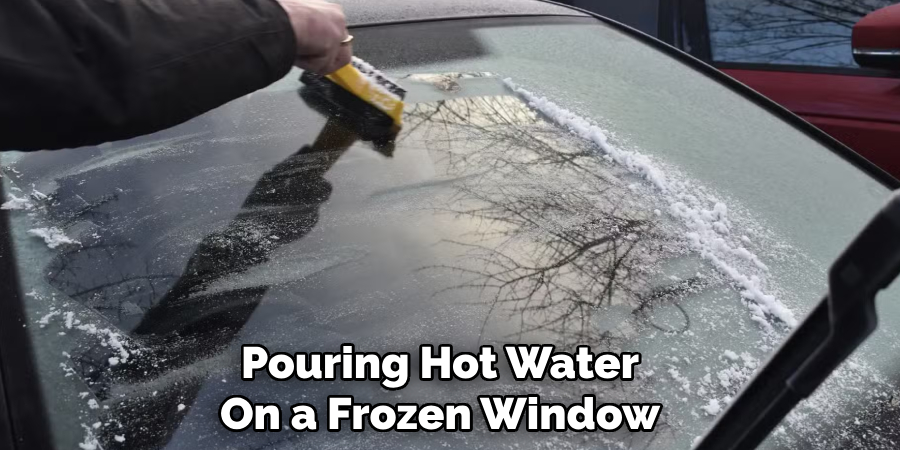Frozen car windows are a frequent problem drivers face during winter, particularly in regions with harsh, cold weather. This issue arises when moisture accumulates on the window surfaces and freezes, creating a solid layer of ice. Frozen windows can significantly hinder visibility, delay your travel plans, and lead to widespread frustration.

Attempting to resolve the problem improperly can result in unwanted consequences, such as scratching or cracking the glass or even causing damage to motorized window components. Understanding how to fix frozen car windows safely and effectively is essential to avoid these risks. Fortunately, there are practical and damage-free techniques to address this issue.
Whether using simple household items, applying de-icing solutions, or employing preventive measures, these methods ensure that you can get back on the road quickly and without compromising the integrity of your vehicle’s windows.
Understanding Why Car Windows Freeze
Condensation and Ice Formation
Car windows freeze when moisture, either inside or outside the vehicle, comes into contact with low temperatures. Inside the car, this often results from condensation that forms on windows overnight, particularly if there is high humidity within the cabin. Outside, the freezing process begins when water droplets or vapor on the glass rapidly cool and solidify as the temperature drops, creating a thin layer of ice that clings to the window surface.
Weather Conditions
Certain weather conditions significantly increase the likelihood of car windows freezing. Snow, freezing rain, or frost are primary contributors as they coat the vehicle in moisture that quickly freezes.
Freezing rain, in particular, can form a hardened icy layer that binds tightly to the glass, requiring more time and effort to remove.
Faulty Seals or Drainage Issues
Damaged or worn-out weather seals around car windows can exacerbate freezing issues. These faulty seals allow water to seep into window tracks, where it can collect and freeze, blocking window movement. Similarly, clogged or malfunctioning drainage channels can trap excess water, worsening the problem in cold weather.
Tip: Identifying the root causes—such as weather exposure, condensation, or seal damage—can help you adopt preventive measures and minimize future freezing hazards.
Tools and Materials Needed
De-icing Products
- Commercial de-icer spray or homemade solutions (e.g., a mixture of rubbing alcohol and water).
Tools for Manual Intervention
- Plastic scraper or a credit card to safely remove ice.
- A soft cloth or towel is used to wipe away moisture after deicing.
Additional Tools
- Hairdryer or portable heater to gently thaw stubborn ice.
- Silicone spray lubricant to maintain and protect window tracks from freezing.
Tip: Avoid using metal scrapers, which can damage or scratch the glass surface. Selecting non-abrasive and effective tools ensures that you remove ice without causing further issues to your car windows.

How to Fix Frozen Car Windows: Step-by-Step Process
Step 1: Avoid Forcing the Window
Refrain from attempting to roll down the window, as this can damage the motor or window tracks. Forcing movement when the window is frozen may lead to costly repairs, so it’s important to address the ice before attempting to operate the window.
Step 2: Apply a De-icer
Spray a commercial de-icer or a homemade solution along the edges of the window. A mixture of water and rubbing alcohol can serve as a quick alternative. Allow the solution to sit for a few minutes to dissolve the ice and reduce the bond between the ice and the glass.
Step 3: Use Gentle Heat
Use a hairdryer or portable heater to warm the frozen area. This method encourages the ice to thaw gradually. Always keep the heat source moving to ensure even heating and prevent potential damage to the glass or surrounding parts. Avoid using boiling water, as the sudden temperature change could cause the window to crack.
Step 4: Gently Loosen Ice
Once the ice has softened, use a plastic scraper or your fingers to carefully break and remove the loosened ice. Avoid applying too much force to prevent scratching or damaging the window. After removing the ice, wipe away any remaining moisture with a soft cloth or towel to keep the area dry and prevent refreezing.
Step 5: Test the Window
Attempt to roll the window down gradually to ensure it operates smoothly. If it still resists, repeat the previous steps as needed. Once it moves freely, consider applying a silicone spray lubricant to the window tracks to prevent future freezing. Regular maintenance will improve your window’s reliability in cold conditions.

Preventive Measures for Frozen Windows
To avoid the hassle of frozen windows, adopting preventive measures is key.
Apply Silicone Lubricant
Spray silicone lubricant on the window tracks to create a protective barrier against moisture. This reduces the likelihood of ice formation and ensures the windows operate smoothly in colder temperatures.
Use a Windshield Cover
Cover your car windows overnight with a windshield cover to block frost or snow from directly settling on the glass. This simple step can save you time on frosty mornings.
Park in a Sheltered Area
Whenever possible, park your vehicle in a garage or under a carport to protect it from extreme weather conditions. Sheltered parking dramatically decreases exposure to freezing elements.
Control Interior Moisture
Excess moisture inside the car can contribute to window freezing. Use dehumidifiers or silica gel packs to absorb condensation, helping keep the interior dry during winter months.
Tip: Consistent maintenance and preparation are the best defenses against frozen windows. By taking these preventive steps, you can minimize disruptions and ensure your car remains dependable, even in harsh winter conditions.
What Not to Do
Avoid Hot Water
Pouring hot water on a frozen window may seem like a quick fix, but it can cause thermal shock, which might lead to cracked or shattered glass. This method risks turning a small inconvenience into an expensive repair.

Don’t Force the Window
Attempting to force open a frozen window can strain the motor or cause misalignment in the window tracks. This can lead to lasting mechanical damage that compromises the functionality of your window.
Avoid Using Sharp Tools
Using metal or sharp tools to scrape off ice can scratch, chip, or weaken the glass surface. Such damage can reduce visibility and increase the risk of the window shattering under additional stress.
Don’t Ignore Persistent Issues
If your windows frequently freeze despite preventive efforts, it may be due to problems with the seals or drainage system. These issues require attention from a professional to avoid long-term damage to your vehicle.
Tip: Following these precautions ensures a safe and effective resolution to frozen window problems while reducing the chances of additional complications or repairs. Prevention and careful handling are key to managing winter’s challenges.
When to Seek Professional Help
Persistent Freezing
If your windows freeze regularly despite implementing preventive measures, it’s time to consult a professional. Frequent freezing could indicate compromised seals or issues with the window tracks, which may not be apparent during a visual inspection.
A professional can thoroughly evaluate and address the root cause, ensuring your windows function properly even in extreme conditions.
Damaged Components
Motorized parts, such as the window regulator or motor, can endure significant strain during freezing conditions. You must seek immediate assistance if you notice unusual noises, slow movement, or complete malfunction when operating your windows. Repairing these components promptly can prevent further wear and tear, extending the system’s overall lifespan.
Expert Diagnosis
Professionals possess the necessary tools and expertise to diagnose and resolve problems that could lead to persistent freezing. Their intervention can address even the most hidden issues, from repairing faulty weatherstripping to unclogging drainage systems. Effective solutions minimize the risk of future complications and help maintain your vehicle’s structural and operational integrity.
Tip: Don’t delay seeking professional help; timely intervention prevents more extensive damage and costly repairs in the long run.

DIY De-icer Recipes and Tips
Rubbing Alcohol and Water Solution
Mix two parts rubbing alcohol with 1 part water in a spray bottle. Spray the mixture directly on frozen windows and watch the ice dissolve quickly. This solution works effectively even in extremely cold temperatures.
Vinegar and Water Solution
Combine equal parts vinegar and water to create an eco-friendly de-icing option. Spray it on icy surfaces for a natural way to melt ice. However, avoid prolonged use, as vinegar may corrode certain surfaces over time.
Tips for Effectiveness
Store your DIY de-icer solutions in a spray bottle for easy application during winter mornings. Always test the solution on a small area of your vehicle first to ensure it won’t damage or discolor the surfaces. These simple recipes and tips can save you time and effort while helping you tackle icy conditions efficiently.
Conclusion
Frozen car windows are a common winter issue caused by snow, ice, and freezing temperatures. Addressing the problem promptly is crucial to ensure safety and prevent further damage. Effective methods on how to fix frozen car windows include using DIY de-icers, applying gentle heat, or relying on commercial solutions.
Preventive measures, such as lubricating window tracks and using protective covers, can help reduce the likelihood of freezing. Avoid risky methods like pouring hot water or using sharp tools, as these can cause significant damage. If freezing persists or window components are damaged, seek professional help for a reliable solution.
